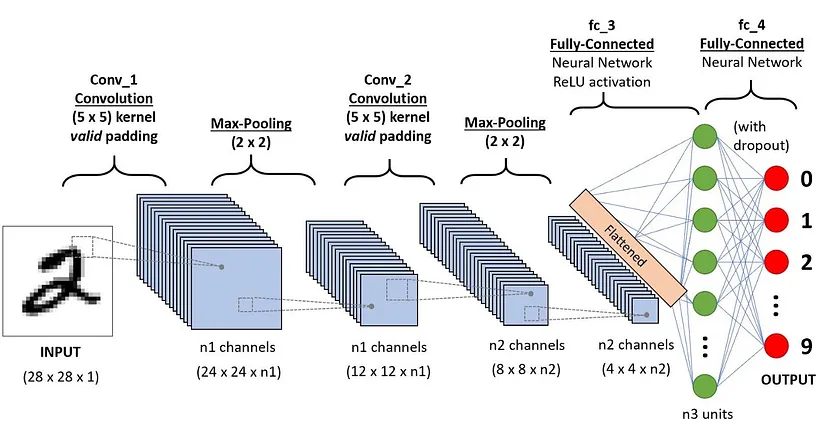Introduction to Neural Networks
Neural networks are the backbone of modern artificial intelligence, enabling machines to learn from data and make decisions. Among the various types of neural networks, Convolutional Neural Networks (CNNs) are particularly popular for image processing tasks.
What is a Convolutional Neural Network (CNN)?
CNNs are a class of deep neural networks that are particularly effective for analyzing visual imagery. They are designed to automatically and adaptively learn spatial hierarchies of features from input images.
Key Components of CNNs
Convolutional Layers: These layers apply a convolution operation to the input, passing the result to the next layer. They are responsible for detecting features such as edges, textures, and patterns.
Pooling Layers: These layers reduce the spatial size of the representation, decreasing the number of parameters and computation in the network.
Fully Connected Layers: These layers connect every neuron in one layer to every neuron in the next layer, often used at the end of the network to make predictions.
Activation Functions: Functions like ReLU (Rectified Linear Unit) introduce non-linearity to the model, allowing it to learn complex patterns.
Other Popular Neural Architectures
Recurrent Neural Networks (RNNs): Ideal for sequential data, RNNs are used in applications like language modeling and time-series prediction.
Long Short-Term Memory Networks (LSTMs): A type of RNN that can learn long-term dependencies, useful in tasks like speech recognition and text generation.
Generative Adversarial Networks (GANs): Comprising two networks, a generator and a discriminator, GANs are used for generating realistic data samples.
Transformer Networks: Known for their efficiency in handling sequential data, transformers are widely used in natural language processing tasks.
Example Code Snippet: Building a Simple CNN with TensorFlow
import tensorflow as tf
from tensorflow.keras import layers, models
model = models.Sequential()
model.add(layers.Conv2D(32, (3, 3), activation='relu', input_shape=(64, 64, 3)))
model.add(layers.MaxPooling2D((2, 2)))
model.add(layers.Conv2D(64, (3, 3), activation='relu'))
model.add(layers.MaxPooling2D((2, 2)))
model.add(layers.Conv2D(64, (3, 3), activation='relu'))
model.add(layers.Flatten())
model.add(layers.Dense(64, activation='relu'))
model.add(layers.Dense(10, activation='softmax'))
Visualizing CNNs

User Perspective: Why Choose CNNs?
From a user perspective, CNNs are preferred for their ability to automatically detect important features without human supervision. This makes them highly effective for tasks like image classification, object detection, and facial recognition.
Resources for Further Learning
Conclusion
Understanding CNNs and other neural architectures is crucial for anyone interested in AI and machine learning. By leveraging these powerful tools, developers can create models that perform complex tasks with high accuracy.

